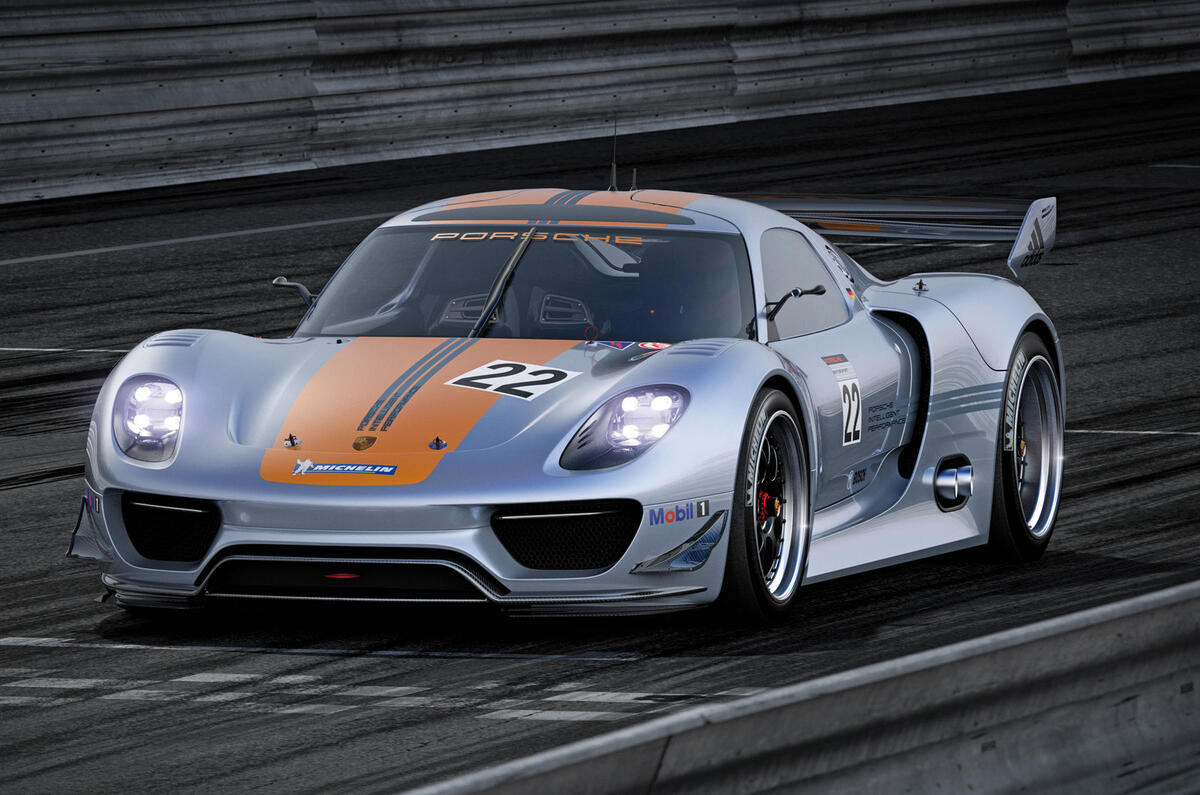Porsche is showcasing the future production version of its 918 hybrid project — and stealing the limelight at this week’s Detroit motor show — with this 756bhp race car, called 918 RSR.
The new model takes the powerplant originally showcased in the 918 Spyder at the 2010 Geneva show and builds on its power and efficiency. Its V8 motor (Porsche hasn’t revealed its capacity yet but acknowledges that it’s a development of the RS Spyder racer’s 3.4-litre unit) produces an extra 55bhp, taking it to 555bhp at a heady 10,300rpm.
See the official pics of the Porsche 918 RSR - now updated with Detroit show pics
That grunt is fed through the rear wheels via a six-speed paddle-shift transmission, while a pair of front-mounted electric motors contribute an additional 201bhp to give a total of 756bhp. They use energy stored during braking in a flywheel spinning at up to 36,000rpm, and their power is called up manually by the driver pushing a button.
See the video of the Porsche 918 RSR at the Detroit show
The flywheel system, which has potential weight benefits over heavy battery cells, is a development of the set-up already used by Porsche’s current hybrid racer, the 911 GT3 R Hybrid. It uses technology commissioned by Porsche and built by a division of the Williams F1 team.
Porsche claims the system can provide up to eight seconds of continuous supply when fully charged, and that it offers a torque vectoring ability to improve agility and steering response. However, in the 911 GT3 R Hybrid, the electric motors can also be used to help reduce fuel consumption, cutting the number of pitstops required or allowing the vehicle to run with less fuel on board.
Read the full story on the Porsche 918 Spyder
The 918 RSR’s construction focuses on keeping the car’s weight to a minimum. As with the original Spyder, its monocoque chassis is made from carbonfibre-reinforced plastic (CFRP). But unlike the Geneva show car, the RSR has a hard-top and doors that open vertically.
It’s widely believed that the shape of the RSR — huge rear wing excepted — is that of the eventual 918 production model. Many of the core features of the 918 Spyder remain, including the deeply scalloped rear bodywork, side-mounted exhausts and air intakes at either side and on top of the rear cowling.
The number carried by the Detroit show car — 22 — pays tribute to a 917 short-tail coupé that won the 1971 Le Mans 24 Hours in the hands of Helmut Marko and Gijs van Lennep. Its distance record — 3315.21 miles at an average speed of 138.13mph — stood until last year’s running of the classic enduro. The car’s colour scheme is a blend of what Porsche calls “liquid metal blue” and the orange commonly used on the firm’s hybrid projects.
























Add your comment